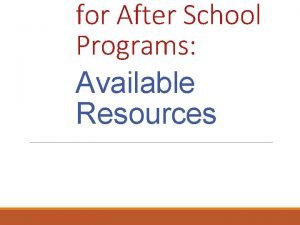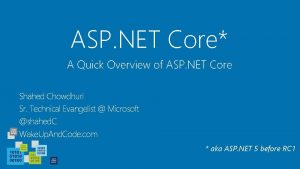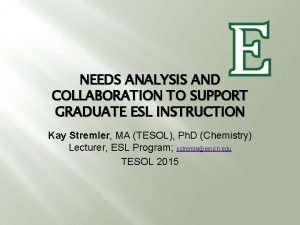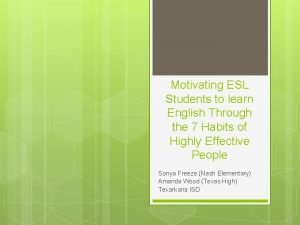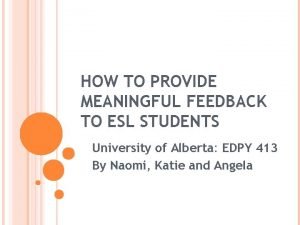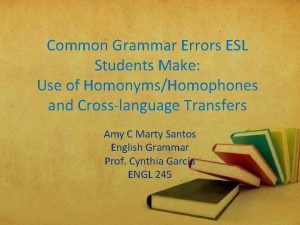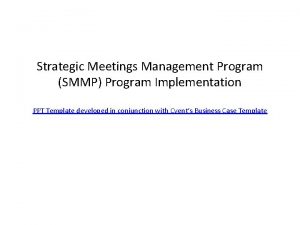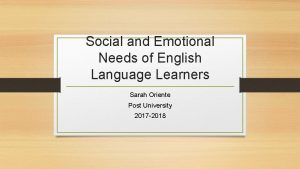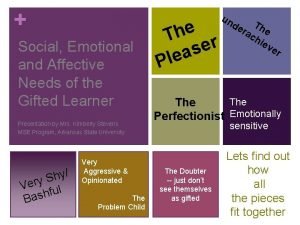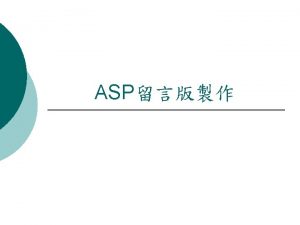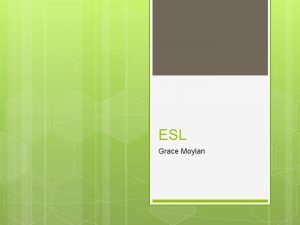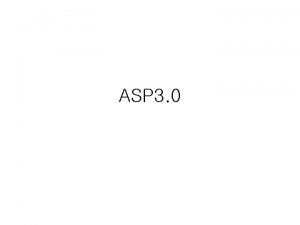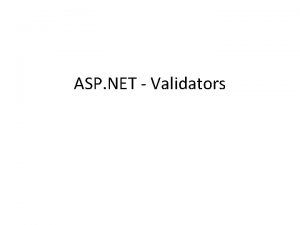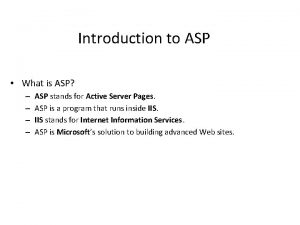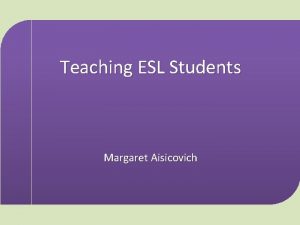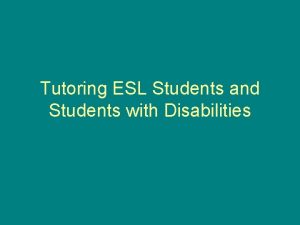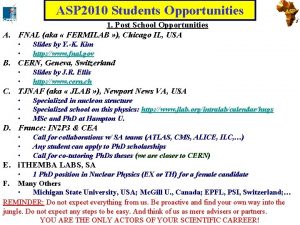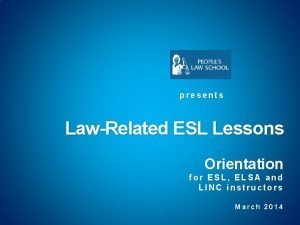AfterSchool Programs ASP Meeting ESL Students Needs Zoriana














- Slides: 14

After-School Programs (ASP): Meeting ESL Students’ Needs Zoriana Selepina Georgetown College

“After-school program? ”

Literature Review �A growing interest � Why ESL students fail in schools � Why research ESL students? � Churches make a difference � Negative effects (academic focus, training/self-confidence, motivation) � Successfully meeting ESL needs

Effective ASPs � Warm and family-like atmosphere � Involve students’ families � Bridge communication gap between schools and parents � Meets students’ academic needs � Academically and culturally knowledgeable staff

Research Question �What characteristics are portrayed and strategies implemented in a church-based after-school program to meet the needs of the attending ESL students?

Methodology � Case study � 3 methods of data collection: interviews, observations, and collection/study of documents (triangulation) � Data analyzed using the constant comparative method � Connections to literature, limitations, questions, findings and implications

Findings � History and overview � Attendance and volunteers � Funding � Diversity � Program description and routine � ESL outreach (knowledge about personal life, family involvement, cultural aspects, desire to attend, atmosphere, motivation, communication)

Limitations � Short amount of time for data collection (4 days, interviews, followup questions) � End-of-school-year activities � Amount of parents who participated � More interviews of staff members

Questions � What are the specific needs of the attending ESL students, and how are schools/the ASP meeting or not meeting those needs? � Do parents want to be directly involved in school or the ASP? � Are there no noticeable academic benefits to the ESL students from attending the ASP?

Conclusion � � � Shows warm, comfortable, and supportive staffstudent relationships Situated in community, allowing for closer relationships and easier access to attend Life values taught and sense of belonging created Intimate, family-life quality Efforts made to engage and motivate students to attend and work hard Tutors professionally trained in their work and know how to confidently work with students

Implications More knowledgeable about the ESL students’ personal lives and learn about their hardships and pressures in school � Students’ families included more to reinforce cultural ties � Literacy-rich activities that promote and enhance success in school � Systematic approach to promote students’ attendance and work ethic � Increase in communication with students’ mainstream teachers �

Communication � COLLABORATION is KEY � Program and staff members work together to learn about ESL students’ lives outside schools � Use knowledge to create culturally relevant learning environments � Ensure optimal language and literacy support through communication � ASP staff meetings

Final Thought �Regardless of program, there are still some sort of benefits �Individual no set formula that can be completed to meet everyone’s needs

References � � � � � Akiba, D. (2007). Ethnic retention as a predictor of academic success: Lessons from the children of immigrant families and black children. The Clearing House, 80(5), 223 -225. Retrieved from http: //www. jstor. org/stable/30189923 Coates, G. D. (2008). After-school programs: A different kind of learning. Mathematics Teaching in the Middle School, 14(4), 242 -244. Retrieved from http: //www. jstor. org/stable/41182680 Grossman, J. B. (2002, October 23). Making after-school count. Education Week. Retrieved from http: //www. edweek. org/ew/articles/2002/10/23/08 grossman. h 22. html Halpern, R. (1999). After-school programs for low-income children: Promise and challenges. The Future of Children, 9(2), 81 -95. Retrieved from http: //www. jstor. org/stable/1602708 Lee, S. J. & Hawkins, M. R. (2008). “Family is here”: Learning in community-based after-school programs. Theory into Practice, 47, 51 -58. Retrieved from http: //www. jstor. org/stable/40071521 Mahoney, J. L. , Parente, M. E. , & Lord, H. (2007). After-school program engagement: Links to child competence and program quality and content. The Elementary School Journal 107(4), 385404. Retrieved from http: //www. jstor. org/stable/10. 1086/516670 Posner, J. K. & Vandell, D. L. (1994). Low-income children’s after-school care: Are there beneficial effects of after-school programs? Child Development, 65(2), 440 -456. Retrieved from http: //www. jstor. org/stable/1131395 Shellenbarger, S. (2005, May 26). Choosing an after-school program: New research gives parents a guide. The Wall Street Journal. Retrieved from http: //www. wsj. com/articles/SB 111706351800943517 Shields, M. K. & Behrman, R. E. (2004). Children of immigrant families: Analysis and recommendations. The Future of Children, 14(2), 4 -15. Retrieved from http: //www. jstor. org/stable/1602791 Smith-Davis, J. (2004). The new immigrant students need more than ESL. Education Digest, 69(8), 21 -26.
 Waaweb
Waaweb Classic asp to asp.net migration
Classic asp to asp.net migration Needs analysis esl
Needs analysis esl Motivating students to learn english
Motivating students to learn english Giving feedback to esl students
Giving feedback to esl students Grammar problems for esl students
Grammar problems for esl students Disadvantages of waterfall model in software engineering
Disadvantages of waterfall model in software engineering Strategic meetings management software
Strategic meetings management software Types of needs in esp
Types of needs in esp Primary needs and secondary needs
Primary needs and secondary needs Primary needs and secondary needs
Primary needs and secondary needs Strategic gender needs and practical gender needs
Strategic gender needs and practical gender needs Primary needs and secondary needs
Primary needs and secondary needs Social emotional needs of ell students
Social emotional needs of ell students Affective needs of gifted students
Affective needs of gifted students
